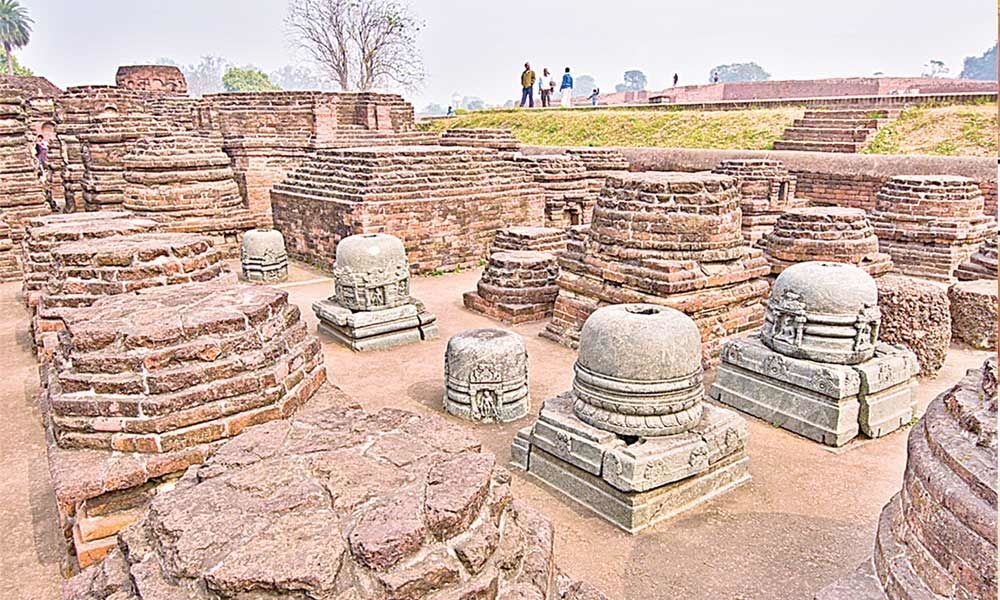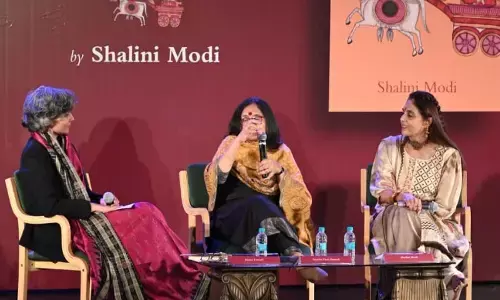Treasured memory of golden past
The Nalanda University in the ancient kingdom of Maghda was the first residential university in the world, which had 10,000 students who came from far off places like China, Tibet, Korea and Central Asia…
The Jayaprakash Narayan International Airport at Patna is small structure eons away from international standards, with the word 'International' being a misnomer in its present condition.
It requires a major facelift as well as the best of 'Swachh Bharat' efforts to impress both desi and international travellers from Europe and several Asian countries landing here in large numbers.
On top of their travel plans in the Buddhist travel circuit here is the famed Nalanda University, a large Buddhist Monastery or Maha Vihara considered one of the first universities of the world where education was imparted for free.
A four-hour bumpy drive from Patna takes us to the ruins of this seat of learning from the ancient kingdom of Magadha some 95 kms from Patna.
The sprawling complex with lush green lawns, flowers of different hues and plenty of mango trees in full bloom was declared a UNESCO World Heritage site in 2016 and bears this stamp.
"This was the first residential university in the world, which had 10,000 students who came from far off places like China, Tibet, Korea, and Central Asia. All students of the Nalanda University are said to have studied Mahayana as well as the eighteen Hinayana texts of Buddhism and their curriculum covered almost 108 subjects including the Vedas, logic, Sanskrit grammar, medicine and Sankhya. The well-known mathematician Aryabhata was from here," our guide informs as we are led to see the ruins of 11 monasteries unearthed after an excavation initiated by the then British Governor General in 1915.
As we walked in, we saw a long line of Buddhist monks their faces glowing with pride and reverence for Bhikshus, who studied here for six long years in ancient times gleaning knowledge both spiritual and empirical.
At the entrance are ruins of beautiful brick structures without a trace of cement held together by a combination of limestone, jaggery and other material used in ancient times with a clear demarcation for each area.
There are residential and classrooms at different levels indicated by still intact stairways, an auditorium with a stage where the gurus sat and a kitchen with a spacious cooking area and a huge well at one corner.
We see the remnants of hostels, where each student had a separate room which was soundproof and remained comfortable under different weather conditions.
In each room, there was a provision for lamps to be placed.
Students were admitted after an entrance test and we know this from the memoirs of Chinese traveller Hiuen Tsang who stayed here.
He tells us that he failed the entrance test the first time and got lucky in his second attempt our guide impresses us with details of strict admission norms at the University.
We are also shown a brick staircase that was used to shoot a fight sequence in the film 'Johny Mera Naam' in a slight departure from ancient tales to the more mundane aspects of present times.
The University originally built by Emperor Kumaragupta 1 of the Gupta dynasty (5th century CE) has several additions by later day kings remaining a learning centre from 7th century BCE through1200 CE.
The excavated ruins measuring an area of around 12 hectares had 10 temples, 8 individual compounds, classrooms, meditation halls, parks and lakes and 2000 teachers.
A huge Stupa with three staircases completed by three different Kings depicts the grandeur of the time and is of great interest to scholars, historians, archaeologists and tourists.
The most outstanding feature attesting to the innovative thinking of the time can be seen on a mica stone platform that covered with a copper sheet worked as a solar panel, lighting up the area almost as brilliantly as electric lights.
As we stop by a shrine which had typical architecture, temple bells and sculptures, we are told that the idol itself is of great antique value and is preserved in the archaeological museum in the vicinity which along with a huge collection of urns, idols of Shiva, Vishnu, Buddha, several intricate sculptures, seals and coins.
The black soot on many bricks that we noticed is said to be marks of destruction left by Mohammed Bhaktiyar Khilji who invaded the area and burnt the University destroying many precious structures.
The fire raged for six months leaving behind a trail of destruction evident to this day, our guide explains.
A huge bell at the entrance supported by intricately sculpted pillars is a treat to watch as are the thoughtfully built structures said to be almost 75 per cent original.
Restoration work was taken up by the government apparently remains close to the original.
The different structures perfectly in place including three library buildings recreate the magic of Nalanda, Takhsasila and Vikramasila that were once knowledge centres par excellence.
Walking through the ruins of Nalanda is a unique experience.
One can visualise the time when its sprawling campus reverberated with the teachings of hallowed masters and gifted students and the focus on learning extended to a vast range of subjects.
The chanting, meditation and thirst for knowledge that shaped many scholars, thinkers, philosophers and scientists from all over the world seem to pervade the air here.
Nalanda remains in your heart as a treasured memory of a golden past.






















